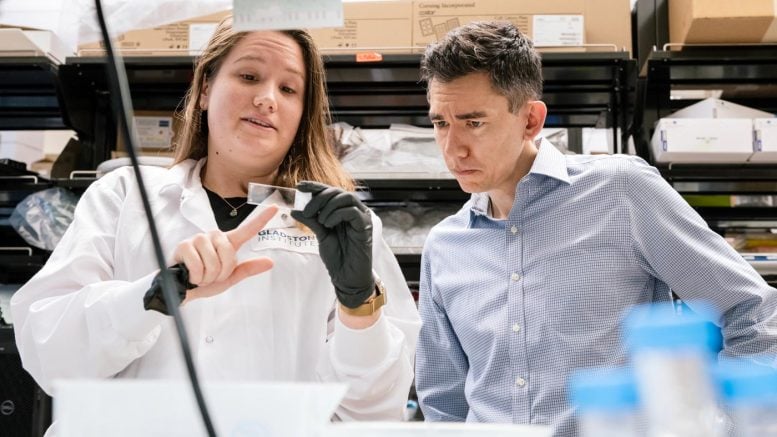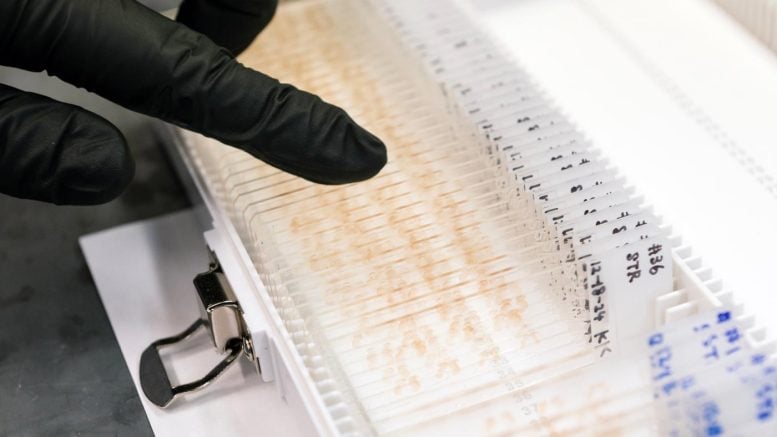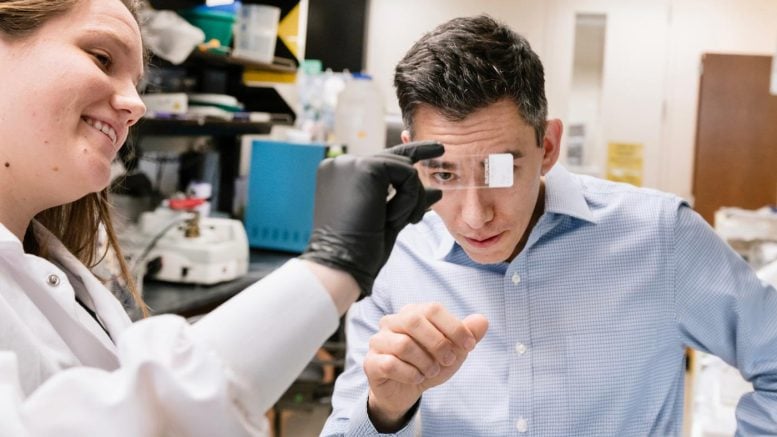Scientists at Gladstone Institutes uncovered a surprising reason why dopamine-producing neurons, crucial for smooth body movements, die in Parkinson's disease.
Parkinson's Mystery: Why Key Brain Cells Die
Certain groups of brain cells control the body's ability to move with precision and coordination. When these cells remain in an overactive state for extended periods, they begin to deteriorate and eventually die. Researchers at the Gladstone Institutes recently observed this process, offering fresh insight into what might go wrong in the brains of people with Parkinson's disease.
Scientists have long recognized that a specific type of neuron is lost as Parkinson's progresses, though the reasons behind this decline have remained uncertain. A new study, published in the journal eLife, shows that in mice, prolonged overstimulation of these neurons can directly lead to their death. The researchers suggest that in Parkinson's, this overactivity may be fueled by a combination of genetic risks, environmental exposures, and the extra strain on surviving neurons as they try to make up for those already lost.

"An overarching question in the Parkinson's research field has been why the cells that are most vulnerable to the disease die," says Gladstone Investigator Ken Nakamura, MD, PhD, who led the study. "Answering that question could help us understand why the disease occurs and point toward new ways to treat it."
Parkinson's Symptoms and Rising Neuron Activity
More than 8 million people around the world are currently affected by Parkinson's disease, a progressive disorder of the brain that leads to tremors, slowed movements, muscle stiffness, and difficulty with walking and balance.
Researchers know that the neurons responsible for producing dopamine, which is essential for voluntary movement, are among those that die in Parkinson's patients. Evidence also shows that these neurons often become more active as the disease advances, both before and after degeneration begins. What has remained unclear is whether this surge in activity is simply a response to the disease or if it plays a direct role in driving cell death.

Continuous vs. Short-Term Activation
In the new study, Nakamura and his colleagues tackled this question by introducing a receptor specifically into dopamine neurons in mice that allowed them to increase the cells' activity by treating the animals with a drug, clozapin-N-oxide (CNO). Uniquely, the scientists added CNO to the animals' drinking water, driving chronic activation of the neurons.
"In previous work, we and others have transiently activated these cells with injections of CNO or by other means, but that only led to short bursts of activation," says Katerina Rademacher, a graduate student in Nakamura's lab and first author of the study. "By delivering CNO through drinking water, we get a relatively continuous activation of the cells, and we think that's important in modeling what happens in people with Parkinson's disease."

Within a few days of overactivating dopamine neurons, the animals' typical cycle of daytime and nighttime activities became disrupted. After one week, the researchers could detect degeneration of the long projections (called axons) extending from some dopamine neurons. By one month, the neurons were beginning to die.
Connecting Mouse Findings to Human Parkinson's
To gain insight into why overactivation leads to neuronal degeneration, the researchers studied the molecular changes that occurred in the dopamine neurons before and after the overactivation. They showed that overactivation of the neurons led to changes in calcium levels and in the expression of genes related to dopamine metabolism.
"In response to chronic activation, we think the neurons may try to avoid excessive dopamine—which can be toxic—by decreasing the amount of dopamine they produce," Rademacher explains. "Over time, the neurons die, eventually leading to insufficient dopamine levels in the brain areas that support movement."

Shared Gene Patterns in Patients and Mice
When the researchers measured the levels of genes in brain samples from patients with early-stage Parkinson's, they found similar changes; genes related to dopamine metabolism, calcium regulation, and healthy stress responses were turned down.
The research did not reveal why activity of the dopamine neurons might increase with Parkinson's disease, but Nakamura hypothesizes that there could be multiple causes, including genetic and environmental factors. The overactivity could also be part of a vicious cycle initiated early in disease. As dopamine neurons become overactive, they gradually shut down dopamine production, which worsens movement problems. Remaining neurons work even harder to compensate, ultimately leading to cell exhaustion and death.
"If that's the case, it raises the exciting possibility that adjusting the activity patterns of vulnerable neurons with drugs or deep brain stimulation could help protect them and slow disease progression," Nakamura says.
Reference: "Chronic hyperactivation of midbrain dopamine neurons causes preferential dopamine neuron degeneration" by Katerina Rademacher, Zak Doric, Dominik Haddad, Aphroditi Mamaligas, Szu-Chi Liao, Rose Creed, Kohei Kano, Zac Chatterton, Yuhong Fu, Joseph H Garcia, Victoria M Vance, Yoshitaka J Sei, Anatol Kreitzer, Glenda Halliday, Alexandra B Nelson, Elyssa Margolis and Ken Nakamura, 26 August 2025, eLife.
DOI: 10.7554/eLife.98775
News
After 150 years, a new chapter in cancer therapy is finally beginning
For decades, researchers have been looking for ways to destroy cancer cells in a targeted manner without further weakening the body. But for many patients whose immune system is severely impaired by chemotherapy or radiation, [...]
Older chemical libraries show promise for fighting resistant strains of COVID-19 virus
SARS‑CoV‑2, the virus that causes COVID-19, continues to mutate, with some newer strains becoming less responsive to current antiviral treatments like Paxlovid. Now, University of California San Diego scientists and an international team of [...]
Lower doses of immunotherapy for skin cancer give better results, study suggests
According to a new study, lower doses of approved immunotherapy for malignant melanoma can give better results against tumors, while reducing side effects. This is reported by researchers at Karolinska Institutet in the Journal of the National [...]
Researchers highlight five pathways through which microplastics can harm the brain
Microplastics could be fueling neurodegenerative diseases like Alzheimer's and Parkinson's, with a new study highlighting five ways microplastics can trigger inflammation and damage in the brain. More than 57 million people live with dementia, [...]
Tiny Metal Nanodots Obliterate Cancer Cells While Largely Sparing Healthy Tissue
Scientists have developed tiny metal-oxide particles that push cancer cells past their stress limits while sparing healthy tissue. An international team led by RMIT University has developed tiny particles called nanodots, crafted from a metallic compound, [...]
Gold Nanoclusters Could Supercharge Quantum Computers
Researchers found that gold “super atoms” can behave like the atoms in top-tier quantum systems—only far easier to scale. These tiny clusters can be customized at the molecular level, offering a powerful, tunable foundation [...]
A single shot of HPV vaccine may be enough to fight cervical cancer, study finds
WASHINGTON -- A single HPV vaccination appears just as effective as two doses at preventing the viral infection that causes cervical cancer, researchers reported Wednesday. HPV, or human papillomavirus, is very common and spread [...]
New technique overcomes technological barrier in 3D brain imaging
Scientists at the Swiss Light Source SLS have succeeded in mapping a piece of brain tissue in 3D at unprecedented resolution using X-rays, non-destructively. The breakthrough overcomes a long-standing technological barrier that had limited [...]
Scientists Uncover Hidden Blood Pattern in Long COVID
Researchers found persistent microclot and NET structures in Long COVID blood that may explain long-lasting symptoms. Researchers examining Long COVID have identified a structural connection between circulating microclots and neutrophil extracellular traps (NETs). The [...]
This Cellular Trick Helps Cancer Spread, but Could Also Stop It
Groups of normal cbiells can sense far into their surroundings, helping explain cancer cell migration. Understanding this ability could lead to new ways to limit tumor spread. The tale of the princess and the [...]
New mRNA therapy targets drug-resistant pneumonia
Bacteria that multiply on surfaces are a major headache in health care when they gain a foothold on, for example, implants or in catheters. Researchers at Chalmers University of Technology in Sweden have found [...]
Current Heart Health Guidelines Are Failing To Catch a Deadly Genetic Killer
New research reveals that standard screening misses most people with a common inherited cholesterol disorder. A Mayo Clinic study reports that current genetic screening guidelines overlook most people who have familial hypercholesterolemia, an inherited disorder that [...]
Scientists Identify the Evolutionary “Purpose” of Consciousness
Summary: Researchers at Ruhr University Bochum explore why consciousness evolved and why different species developed it in distinct ways. By comparing humans with birds, they show that complex awareness may arise through different neural architectures yet [...]
Novel mRNA therapy curbs antibiotic-resistant infections in preclinical lung models
Researchers at the Icahn School of Medicine at Mount Sinai and collaborators have reported early success with a novel mRNA-based therapy designed to combat antibiotic-resistant bacteria. The findings, published in Nature Biotechnology, show that in [...]
New skin-permeable polymer delivers insulin without needles
A breakthrough zwitterionic polymer slips through the skin’s toughest barriers, carrying insulin deep into tissue and normalizing blood sugar, offering patients a painless alternative to daily injections. A recent study published in the journal Nature examines [...]
Multifunctional Nanogels: A Breakthrough in Antibacterial Strategies
Antibiotic resistance is a growing concern - from human health to crop survival. A new study successfully uses nanogels to target and almost entirely inhibit the bacteria P. Aeruginosa. Recently published in Angewandte Chemie, the study [...]





















